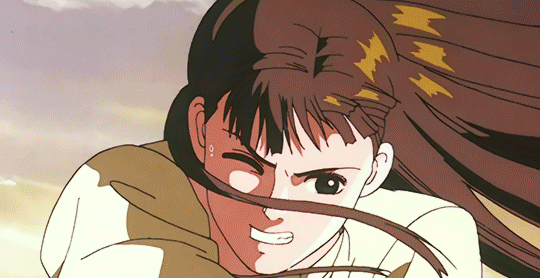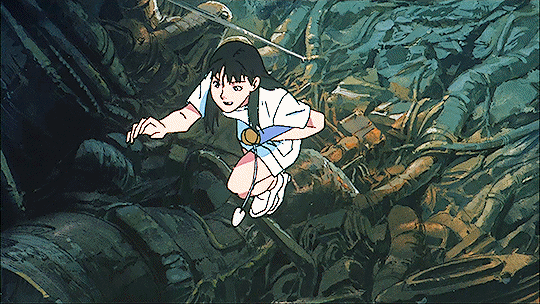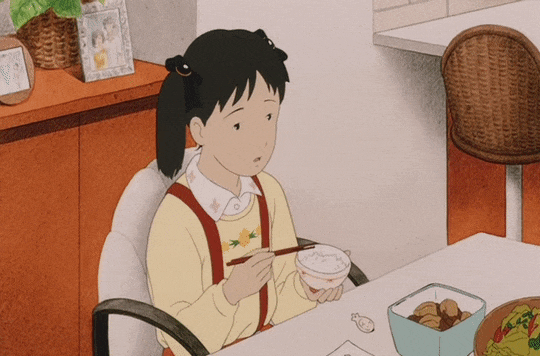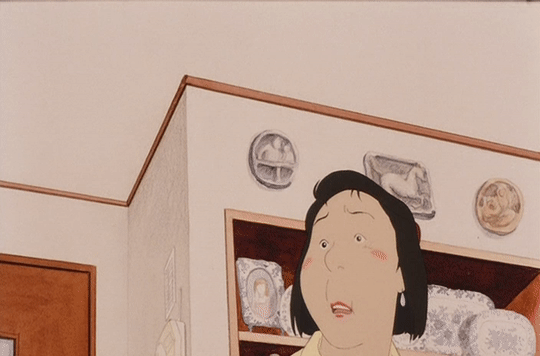originally posted at https://canmom.tumblr.com/post/692321...
Heyo friends!

So! Katsuhiro Otomo and friends~ You know all about that guy no doubt. After all, he directed Akira! (I wrote about the original context of Akira on Animation Night 34.) And he was heavily involved in the short film compilations like Robot Carnival and Memories of the 80s and 90s which got this whole film night going~
The group of animators who worked on these films have come to be known as the ‘realist school’, although in truth there are several schools that could be described as such. (When asked by a fan what he thought of Royal Space Force: The Wings of Honneamise, certainly a milestone for ‘realism’ with Anno’s incredible animation of a rocket taking off, Isao Takahata was not a fan.) The realists include directors like Satoshi Kon, and animators like Mitsuo Iso, and Robot Carnival also marked the starting point for figures like Koji Morimoto of 4C.
As ever, I’m immensely grateful to Matteo Watzky for helping me understand their lineage! And while we’ve watched most of the films associated with this loose gaggle of animators on Animation Night, there are a couple of major gaps…

So! Roujin Z (1991), a movie that’s just a couple of months older than me, adapts an Otomo story about a robotic hospital bed, and shares many of the same staff including animation legends like Hiroyuki Okiura (animator of this legendary sequence) and Toshiyuki Inoue.
The director this time was not Otomo himself, but Hiroyuki Kitakubo, who had - before Akira! - debuted on foundational hentai Cream Lemon and adapted a Shirow manga to OVA; he would later direct the delightful Golden Boy (Animation Night 69) and the startlingly stylish Blood the Last Vampire (Animation Night 77).
And if we wander back to Robot Carnival, he directed the very sardonic A Tale of Two Robots: Chapter Meiji, in which a kind of steampunk Japanese robot fights a similar American robot to a destructive standstill in a kind of parody of the Meiji restoration. So strong expectations?
So what about the movie? Compared to something like Akira, Roujin Z is much more wrly humorous in tone - very similar in fact to the segment Stink Bomb in Memories, in that it’s a kind of disaster movie with jaw-dropping animation applied to a premise that plays with Otomo’s own reputation for dark spectacular disaster, playing with the idea of an aging population increasingly reliant on tech.
Basically? It’s been a movie I’ve wanted to watch for a good while, and now we can finally run it!

Now Junkers Come Here came just a few years later, in 1995, but of course the landscape had been drastically transformed by Eva and the realist movement had more time to come into their own, with the rise of Mamoru Oshii’s movies like Ghost in the Shell (Animation Night 39).
Junkers is something different than all this extravagant sci-fi. Adapting a novel series, it portrays the story of Hiromi Nozawa, a young girl going through a personal crisis with family and school who finds unexpected comfort in the form of a talking, wish-granting dog called Junkers.
The first version of Junkers was given to the true legend Shinya Ohira, but his pilot proved both too expensive and too experimental (looking at the standard of animation involved, perhaps we can see why!), so the powers that be gave it instead to Jun’ichi Satō of Sailor Moon, and added animation director Kazuo Komatsubara, an established Kanada School animator.
Here’s an excerpt from Watzky’s article…
Although Komatsubara was by all means a living legend, bringing him on the movie can only be read as a conservative move: putting an established and experienced figure on the movie would have been a guarantee that it would not try to be as challenging as Ohira’s pilot had been.
The movie did, however, feature excellent animation work—Tanabe and Iso, especially, were the stars of the show, while Ohira had more or less left the project. It must also be noted how much Satô’s direction was instrumental in highlighting the animation. The simple storyboards were always made in such a way to have multiple actions on screen, allowing the different characters to interact in the frame and the animators to give the full measure of their talent.
More than anything, it’s an exploration of subtle character acting - featuring an incrediblely subtle cut of quiet emotional devastation by animation god Mitsuo Iso and really lively, expressive animation of eating by Osamu Tanabe.

So in short: expect both of these movies to be absolute animation powerhouses, in different ways. Oddly, while Roujin Z tends to be at least noted as a footnote when talking about Otomo, Junkers Come Here seems to have largely been forgotten - if it wasn’t for Watzky I would never have heard of it. A big shame because it seems like a fantastic expression of one of the most challenging styles of animation - and one I feel I personally really need to cultivate lol…
Right so! With the time being as late as it is, that’s about all I can write for now. So, Animation Night 118 will go live now at picarto.tv/canmom, and we should start showing films in about 20-30 minutes! Hope to see you there!!
Comments